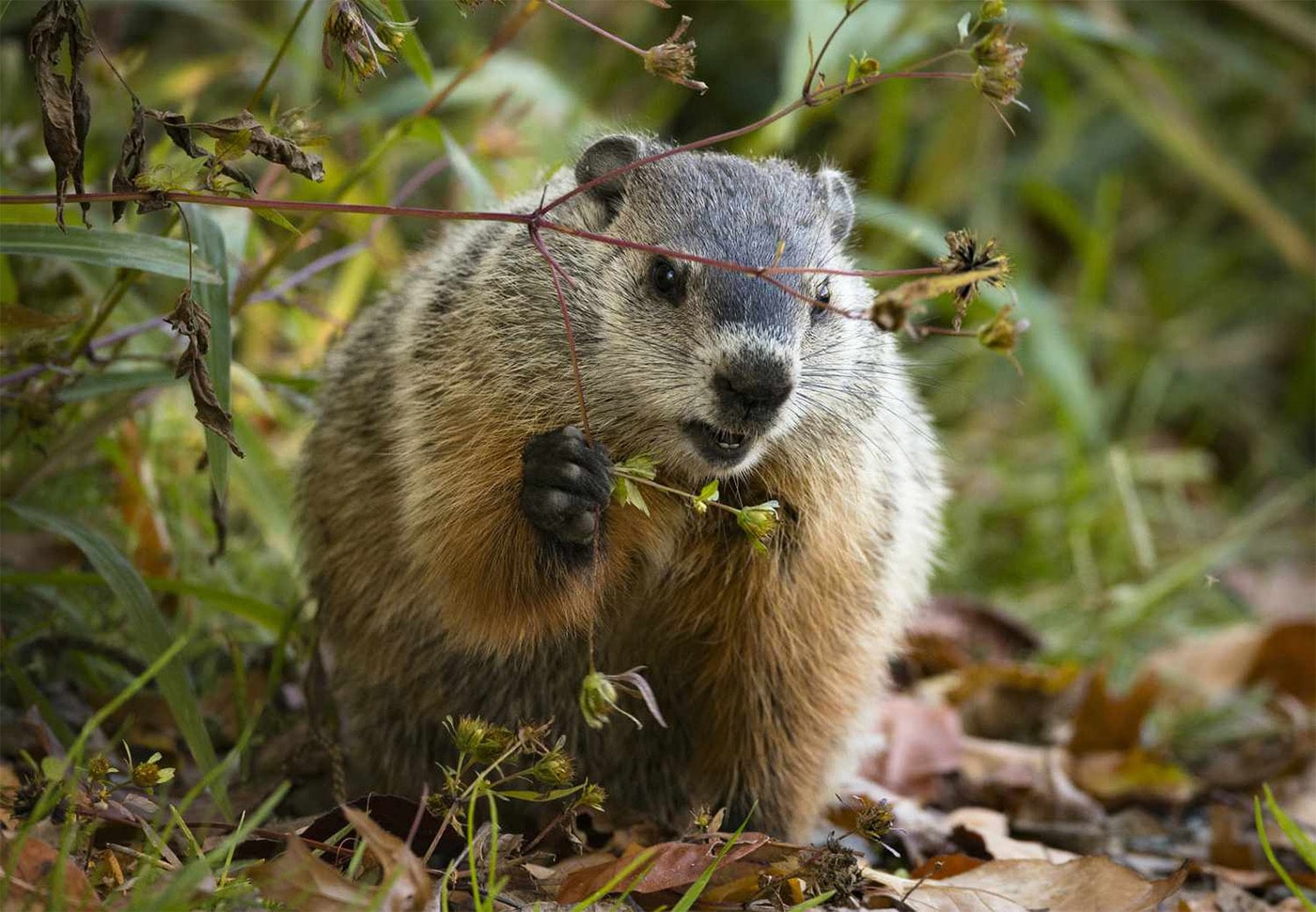
39 interesting facts about woodchucks
- 👁️ 266
Woodchucks, also known as groundhogs, are fascinating creatures that belong to the family of large ground squirrels known as marmots. Famous for their weather prediction folklore associated with Groundhog Day, these animals have characteristics and behaviors that are intriguing and complex. Beyond their shadow-seeking habits in early February, woodchucks play a significant role in their ecosystems. They are skilled diggers, create extensive burrow systems, and have a diet that impacts the vegetation around them. Here are 39 interesting and informative facts about woodchucks that delve into their biology, lifestyle, and the surprising nuances of their existence.
- Woodchucks are native to North America.
- Their scientific name is Marmota monax.
- Woodchucks belong to the rodent order.
- They are the largest member of the squirrel family in their habitat.
- Groundhog Day, celebrated on February 2nd, is based on the folklore that woodchucks can predict the coming of spring.
- They have a chunky body, short legs, and a bushy tail.
- Woodchucks have two coats of fur: a dense grey undercoat and a longer coat of banded guard hairs.
- They are excellent climbers and swimmers when needed.
- Woodchucks’ burrows can be up to 66 feet (20 meters) in length.
- A single woodchuck burrow can have several entrances and chambers.
- These animals are true hibernators, experiencing a significant drop in heart rate and body temperature during winter.
- Woodchucks’ body temperature can drop to as low as 37 degrees Fahrenheit (3 degrees Celsius) during hibernation.
- They can lose up to one-third of their body weight during the hibernation period.
- Woodchucks primarily eat grasses, fruits, and vegetables.
- They are known to occasionally eat small insects and snails.
- Predators of woodchucks include wolves, foxes, coyotes, and humans.
- The gestation period for a woodchuck is about 32 days.
- Woodchucks typically give birth to 2 to 6 offspring in the spring.
- Baby woodchucks are called kits or cubs.
- Kits are born blind and furless.
- Woodchucks have sharp, chisel-like front teeth that grow throughout their lives.
- They use their incisors to gnaw on vegetation and defend themselves.
- Woodchucks have a vocal range that includes whistles, squeals, and barks.
- They are solitary animals, except during the breeding season.
- The average lifespan of a woodchuck in the wild is about 6 years.
- Woodchucks’ burrows also provide shelter for other wildlife, including rabbits, foxes, and skunks.
- They are diurnal, being most active during the early morning and late afternoon.
- Woodchucks have a keen sense of hearing and sight.
- They use their burrows as places to sleep, rear their young, and hibernate.
- The entrance to a woodchuck’s burrow can be identified by a large mound of excavated soil.
- Despite their bulky appearance, woodchucks can run at speeds up to 15 miles per hour (24 kilometers per hour) for short distances.
- Their digging activities aerate the soil, but can also damage crops and gardens.
- Woodchucks were once considered agricultural pests by farmers.
- Their nickname “groundhog” comes from their habit of living in the ground.
- Woodchucks have a special tooth structure that allows them to grind their food thoroughly.
- Their Latin name “monax” is derived from a Native American word that means “digger”.
- The famous Punxsutawney Phil is the most well-known woodchuck used to “predict” the weather on Groundhog Day.
- Woodchucks can climb trees to escape predators or to find food.
- Research on woodchuck hibernation has contributed to medical studies on liver disease and the development of artificial hibernation for humans.
Woodchucks are much more than the subjects of a popular cultural tradition. Their unique behaviors, physiological adaptations, and the roles they play in their ecosystems underscore the complexity of these creatures. From their impressive burrowing skills to their contribution to scientific research, woodchucks are an integral part of North America’s wildlife. Understanding these animals helps us appreciate the biodiversity of our planet and the intricate connections within nature.
Woodchucks, also known as groundhogs, are fascinating creatures that belong to the family of large ground squirrels known as marmots. Famous for their weather prediction folklore associated with Groundhog Day, these animals have characteristics and behaviors that are intriguing and complex. Beyond their shadow-seeking habits in early February, woodchucks play…